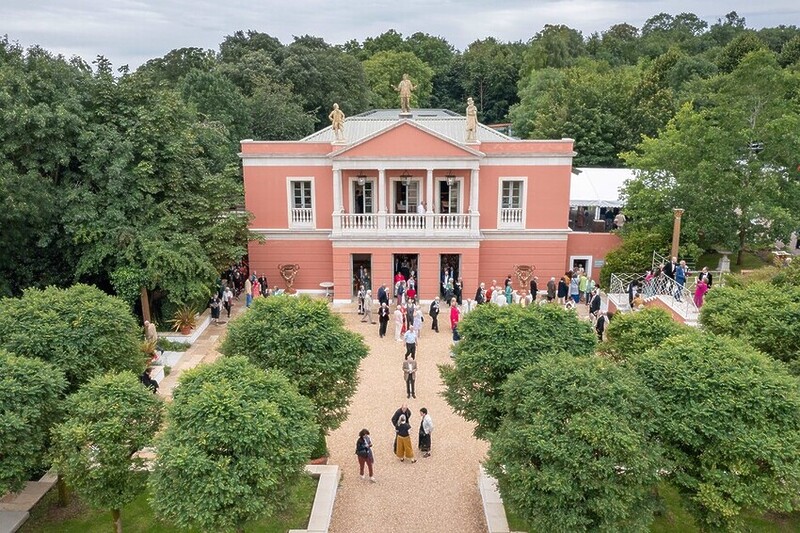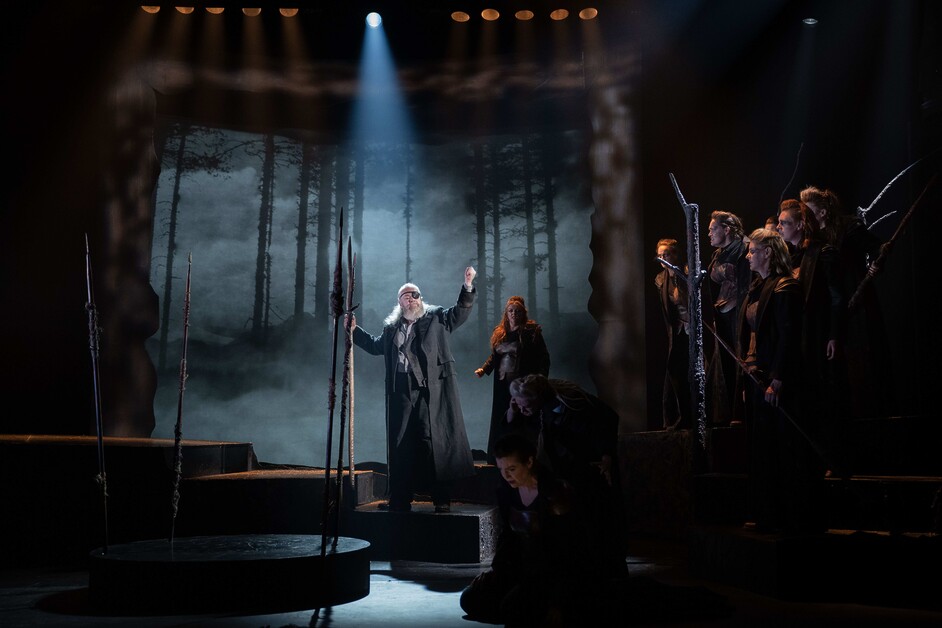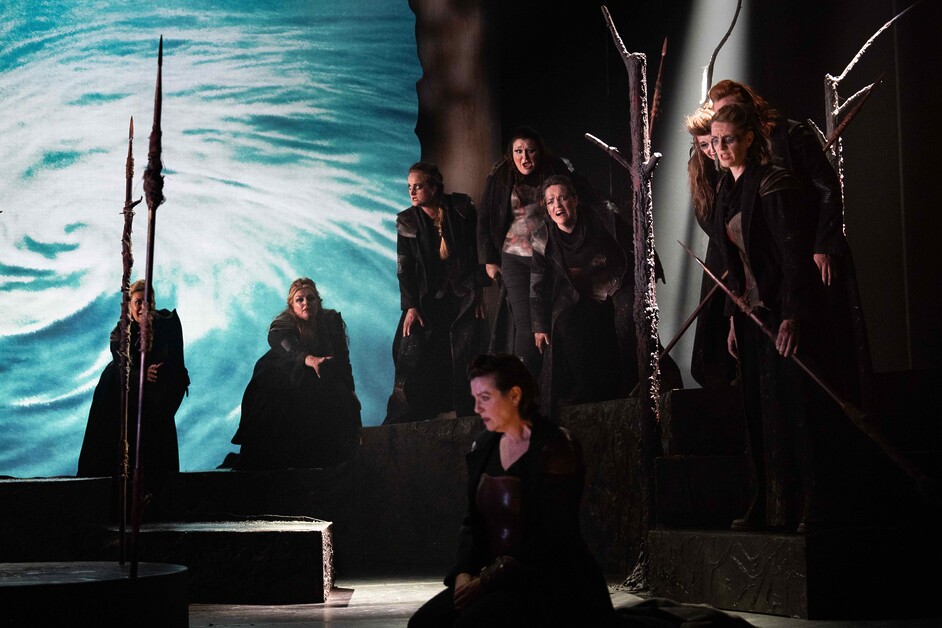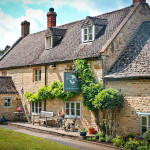Janette Griffiths discovers Wagner comes to the Cotswolds in the hidden gem of the Longborough Festival Opera
Summer across Europe and the hills, mountains, valleys and seashores are alive with all sorts of music. In Germany, Wagner devotees prepare to climb that gentle Bavarian hill up to the composer’s own theatre. Posh picnics brave English weather as Glyndebourne’s green Sussex countryside welcomes Bizet, Handel and some Wagner too this year. Benjamin Britten fans travel to the Suffolk coast and his Aldeburgh Festival. There’s opera on the lake in Austria’s Bregenz, in a Roman arena in Verona and at Puccini’s lake shore home in Torre del Lago.
England’s Cotswolds are more redolent of cream teas and thatched cottages than classical music. However, in 1991, a travelling opera gave a performance of “Cosi Fan Tutte” in the stable block of a country house called Banks Fee. That set in motion the creation of one of the loveliest hidden gems of an opera festival on the planet.
Martin Graham, an opera-loving builder/entrepreneur got the decidedly eccentric, very English, idea of holding an opera festival in a barn in the grounds of his Banks Fee home. And if you are going to create an opera festival in your backyard, why waste time with little chamber works? Graham wanted to stage Wagner’s mammoth “Ring Cycle”.

“Rheingold”, the first day of the cycle, features giants who built Valhalla at the behest of chief god, Wotan. The completed project runs into all sorts of trouble involving money, theft, swindles and murder. Martin Graham did not have to wait for his building project’s completion before he had to fight Cotswold District Council’s planning committee, the Council for the Protection of Rural England and various hostile locals.
He’d taken the bold decision to make that barn look like a mini-Bayreuth with trompe l’oeil figures of Rossini, Mozart, Verdi, Puccini and Wagner atop a classical pediment. He’d even wrangled some offloaded, plush, red velvet seats from Covent Garden – but trouble was looming. Fortunately murder and theft were not involved but a council enforcement officer did pop round to the grounds while Graham was on holiday -and declared that the whole thing should be demolished.
Well, if you are bold enough to stage a Wagner opera festival, you are certainly bold enough to take on a few council curmudgeons. Martin Graham stood his ground both literally and figuratively. He went right on with his project. Dressing rooms were installed and later a restaurant.
In 2006 three terra-cotta composers were installed on top of that troublesome pediment. Mozart on one side, Verdi on the other with Wagner, where else, but on top. Those statues arrived in 2006 and settled into their final position on Wagner’s birthday, May 22nd. Oh, and at some point, in the proceedings the local council had the good sense to give in.
I had walked up that fabled Bayreut Hill to the most famous Wagner festival. I’d also heard Mozart’s “Marriage of Figaro” at Glyndebourne but somehow I had missed these “Ring Cycles”. There they were just over an hour’s drive from my Oxford home and just 10 minutes from Moreton-in-Marsh train station on the local “Hedgehog” bus.

I finally woke up this summer after the whole cycle had been performed to find that an extra “Die Walküre” had been added. I was off!
The meadows on this July afternoon were summer golden, mature trees formed green tunnels over the narrow country roads, red kites circled overhead – and there was the sign to the opera. A tree-lined lane led us to a field where other operagoers were unloading their picnic baskets. Wagner was already visible on his pediment a short walk past the parked cars and folding chairs. What would he have made of this event?
Certainly, it lacked the solemnity of that reverent walk up the hill to his uncomfortable theatre in Bavaria. And how could a small barn do justice to this, the most loved day of his “Ring Cycle”? Where would space be found for the minimum of 5 harps that even the Royal Opera House had to house in a box?
If he’d seen productions of his work over the past few decades, he would have shared my other concern. Would Longborough go in for the standard updated ugliness favoured by contemporary designers. Would the action take place in a gloomy time tunnel? (London) A spaceship? (Munich) What looked like a warehouse? (Toronto).
Once we sat on those plush red velvet seats, I saw that all would be well. Longborough director, Amy Lane, had opted for the sensible solution of a video screen depicting the storms, forest, rocky mountain-tops and fiery finale of the story. The theatre is small, truly chamber-opera sized but it has tiered boxes and those comfortable stalls. The cosiness means that you are right there in the drama. The orchestra was even somewhat covered as is Bayreuth’s per the great man’s orders.

This is not a review of the performance. Suffice it to say that the cast and orchestra were excellent, and the production told the story just the way Wagner imagined it, making it more beautiful and moving than many international “Rings”.
A picnic on the lawn overlooking the Cotswold countryside was certainly as enjoyable as a hearty Bavarian meal during a Bayreuth intermission. It was also somehow more relaxed than some of the rather grand candelabra and caviar affairs of a Glyndebourne feast.
Images (C) Matthew Williams-Ellis.
Tell Me More About Wagner And The Cotswolds
For anyone who is not sure about Wagner, next year Longborough will feature Rossini’s “Barber of Seville”, Debussy’s “Pelléas et Mélisande”, Purcell’s “Dido and Aeneas” and the premiere of a new opera about the Wagner clan: “Wahnfried: The Birth of the Wagner Cult” but no Wagner opera. That is scheduled with “Tristan und Isolde” in 2026.
Longborough Festival Opera Nearest train station Moreton-in-Marsh GL560QF
The Hedgehog bus service from the station to Longborough costs £15 return and can be booked directly from the Longborough Festival Opera.
Where to stay? Some local suggestions from Longborough.






